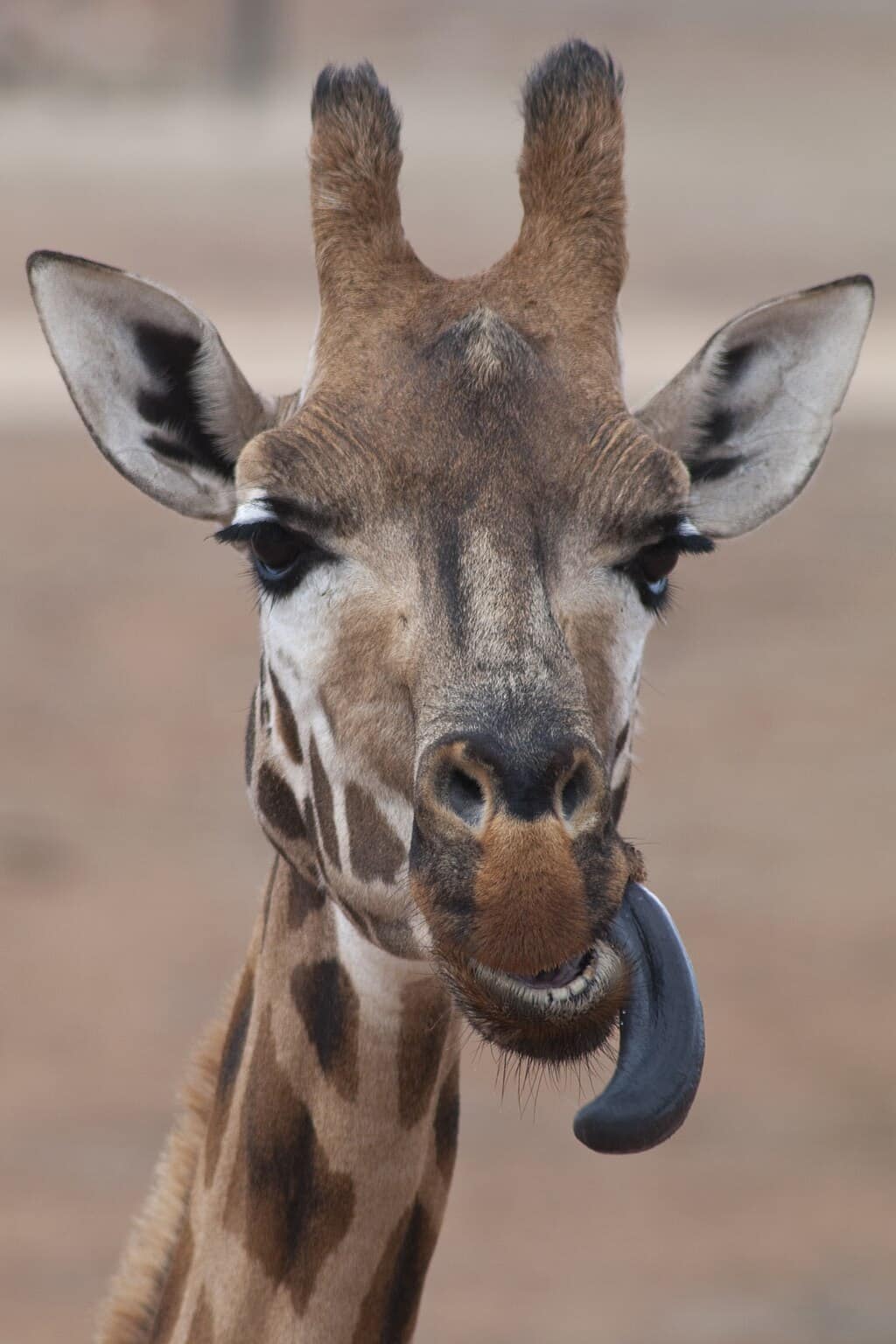Ever wondered why giraffes have such dark tongues? It’s not just a quirky feature but a clever adaptation that helps them survive in their environment. Let’s dive into the fascinating science behind their unique black tongues.
## The Science Behind the Shade: Melanin and More
Ever looked at a giraffe munching on leaves and wondered, “Why is its tongue black?” It’s a pretty strange thing to see, right? Well, this intriguing feature is more than just a quirk of nature. It’s a brilliant adaptation that helps these gentle giants thrive in their African home.
Giraffes love to snack on acacia trees, but those tasty leaves come with a prickly problem: thorns. And we’re not talking about tiny prickles here. Acacia thorns can be long, sharp, and seriously intimidating.
Scientists believe that the dark color comes from a pigment called melanin—the same stuff that gives our skin its color and protects us from the sun. In the giraffe’s tongue, melanin likely acts like a natural sunscreen, shielding it from the harsh African rays as it spends hours reaching for food high up in the trees.
But melanin’s talents don’t stop there. It also toughens up the tongue, making it more resistant to punctures and scratches. This extra protection is super important for giraffes, allowing them to navigate those thorny branches and get to their leafy meals without getting hurt.
## A Spectrum of Shades: Why Some Tongues Are Darker Than Others
Now, you might have noticed that not all giraffe tongues are the exact same shade. They can range from very dark blue to almost purple. This could be due to several factors, including genetic variations between individual giraffes and the specific environments they live in. Just like humans have different skin tones, giraffes have varying melanin distributions.
## More Than Meets the Eye: Other Possible Reasons
Some scientists suggest that the dark color might also make the giraffe’s tongue less noticeable to predators when they’re getting a drink of water. It could act like camouflage, making it harder for sneaky predators to spot them.
## A Tongue with a Purpose: Length and Dexterity
You’ve probably heard that giraffes have long necks to reach the tasty leaves high up in trees. Well, their tongues are right there with them, lending a helping hand! These tongues are impressively long – some can stretch out to a whopping 22 inches! That’s almost two rulers lined up end-to-end. This incredible length, combined with the tongue’s prehensile nature (its ability to grasp), allows giraffes to carefully maneuver around those acacia thorns and strip leaves with amazing dexterity.
## The Giraffe’s Tongue: A Marvel of Evolution
It’s incredible to think about how such a small detail, the color of a tongue, can play such a vital role in an animal’s survival. It’s a testament to the awesome power of natural selection and the amazing ways that animals adapt to their surroundings. So, the next time you see a picture of a giraffe, take a moment to appreciate that remarkable black tongue—it’s a perfect example of nature’s ingenuity.
Have you ever wondered why your dog [scrapes the carpet](https://www.lolaapp.com/why-do-dogs-scrape-the-carpet)? It’s a common behavior that can be frustrating, but it’s actually a sign of something going on. If you’re curious about [wolverine’s bone claws](https://www.lolaapp.com/wolverine-s-bone-claws), you’re not alone. These legendary claws are a fascinating part of Wolverine’s character, and they’ve been the subject of much speculation and debate.
- Unveiling the Enigma: Mansoureh Khojasteh Bagherzadeh’s Public Appearances & Private Life in Iran - July 18, 2025
- Unveiling the Mystery: Mansoureh Khojasteh Bagherzadeh’s Husband: A Rare Glimpse into a Private Life - July 18, 2025
- Unveiling Masoud Khamenei’s Mother: Power, Influence, and Iran’s Future - July 18, 2025
















